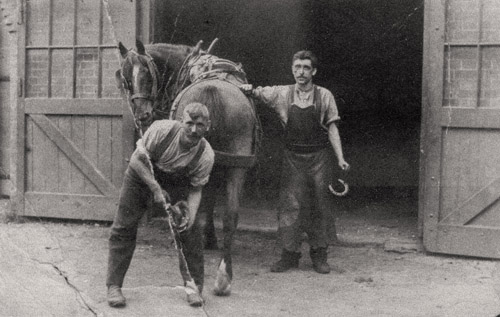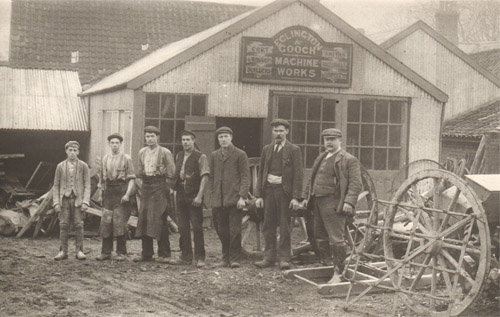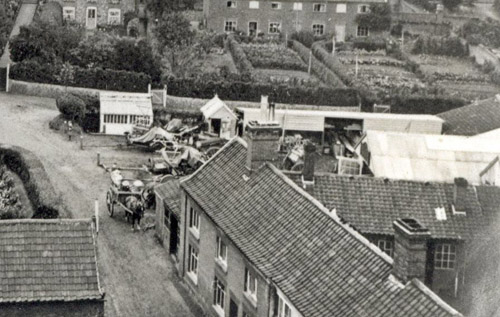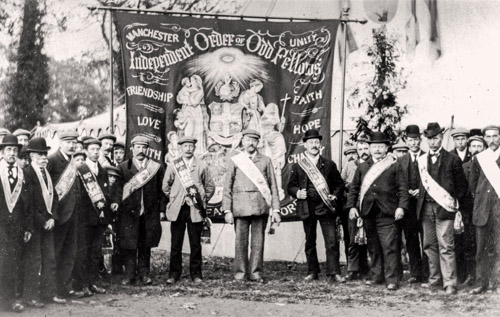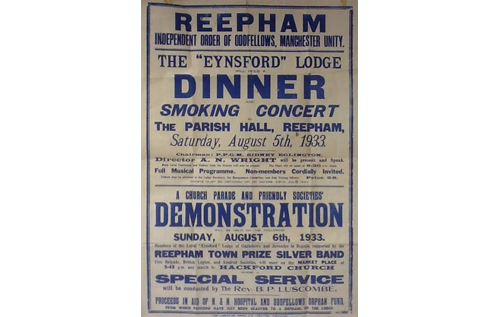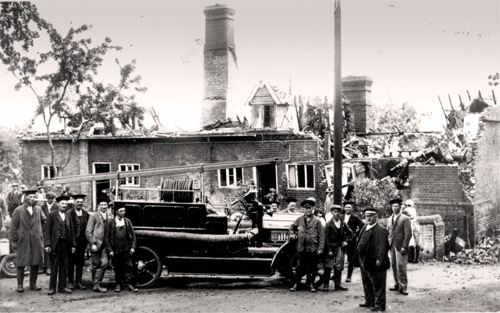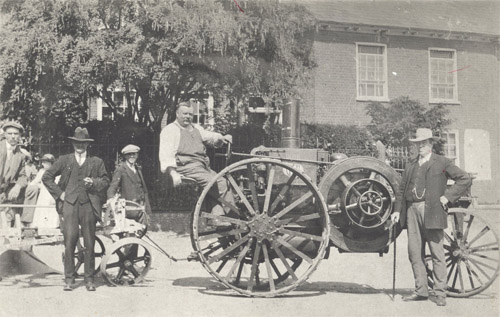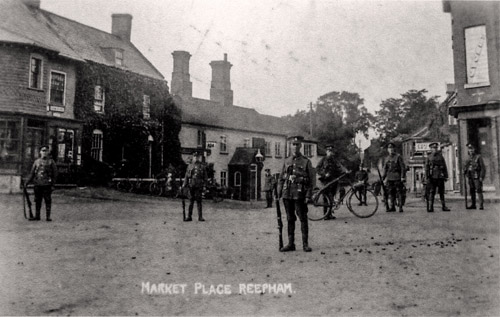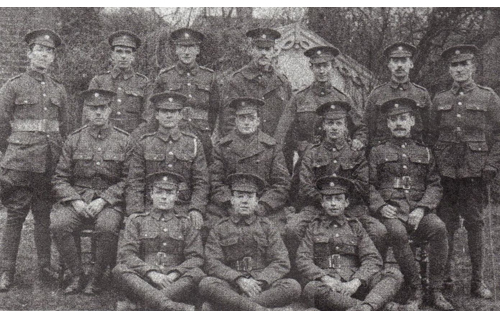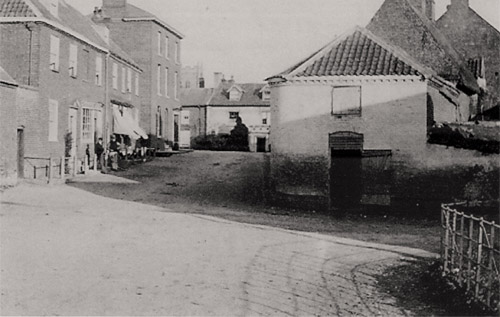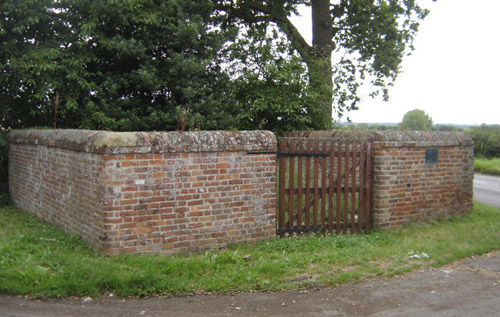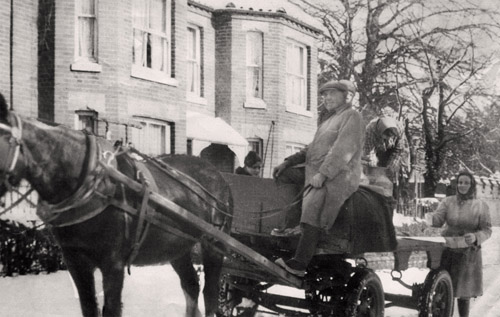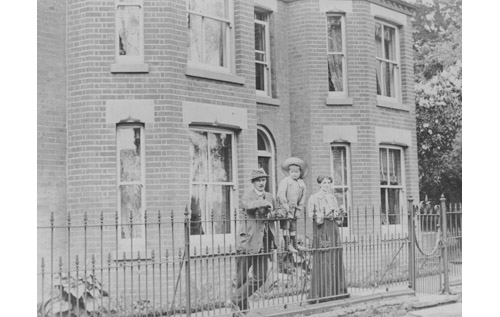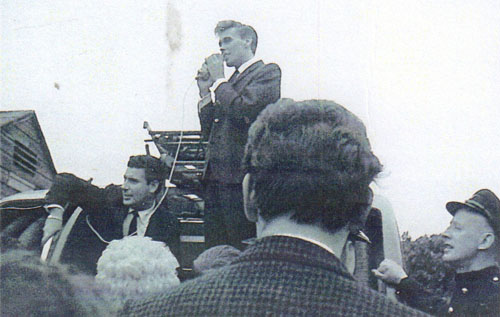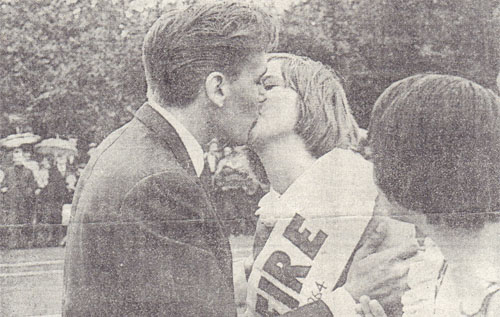By Janet Archer
The Reepham Life 2021 Calendar for July features a photograph of Church Hill. It shows the thatched house, Magpie House, covered in greenery and a view of the cottages on the lower part of Church Hill.
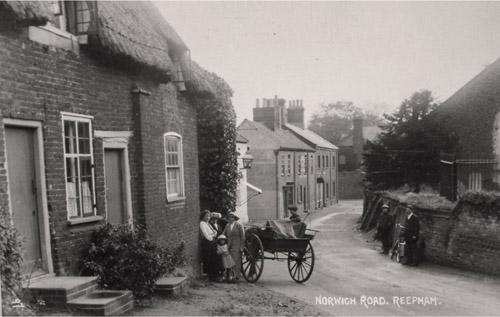
Magpie House was for a long time a butcher’s premises and the thatched house has been occupied in the past by officers of the Salvation Army and, in the 1980s, the offices of M-Tec Computer Services. It was also the first home of Diane’s Pantry (now in the Market Place).
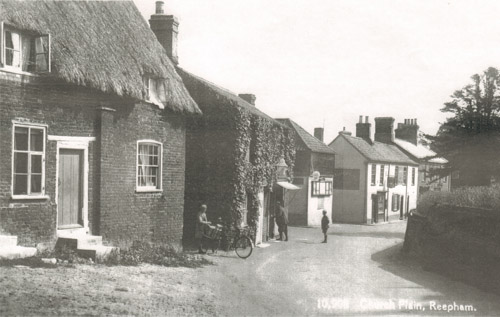
The second view of Church Hill (above), taken from a slightly different angle, shows a blind over the butcher’s shop window, and past Magpie House can be seen a building with noticeboards attached: this was once the Farriers Arms (or the Horseshoes) beer house.
As well as the agricultural machinery business in Malthouse Yard, Sidney Eglington also ran an undertaking concern, and the noticeboards may have been used to announce news and arrangements for forthcoming funerals.
He also owned the building opposite, now an outbuilding belonging to Magpie House, and at one time he let it to the Salvation Army for their services.
The first cottage further down was a baker’s premises for many years, well into the 1920s.
It has more recently been occupied by the Green Room clothing boutique, No. 21 pop-up art gallery and currently Koti Store, which sells refill household and bathroom products, including sourced vintage and locally made pieces.
In the 1980s, the building housed the Wavy Line shop and later the first site of a small Spar shop. More well-known (in the early 2000s) it was Echo Antiques.
Its use as a baker’s shop dates back at least to the 1830s, when it was run by Lydia Scurll, a younger sister of Brettingham Scurll, Parson Woodforde’s manservant.
After the parson’s death in 1803, Brettingham, who would then have been about 40 years old, did not return to Reepham, but seems to have acquired freehold properties in Bergh Apton, where he was buried in 1842, aged 81.
He came from a very large family and some of his Scurll relatives, including Lydia, are buried in Reepham churchyard.
Lydia left the business and property in Church Street to a nephew named Brettingham Potter Scurll, and this Brettingham continued as a baker until he died in 1854.
The Reepham Archive is open to the public on the first Wednesday and Saturday of the month from 10 am – 12 noon (or by appointment), upstairs in the Bircham Centre, Market Place, Reepham. For more information about opening times and current services, please The Reepham Archive is normally open to the public on the first Wednesday and Saturday of the month from 10 am – 12 noon (or by appointment), upstairs in the Bircham Centre, Market Place, Reepham. For more information about opening times and current services, please email


